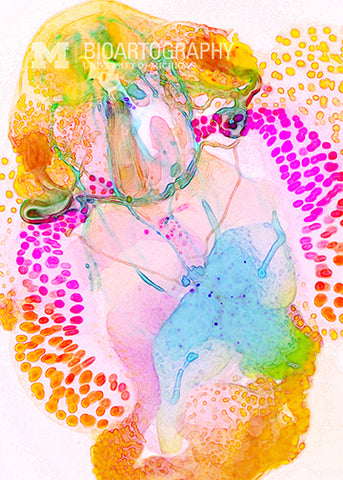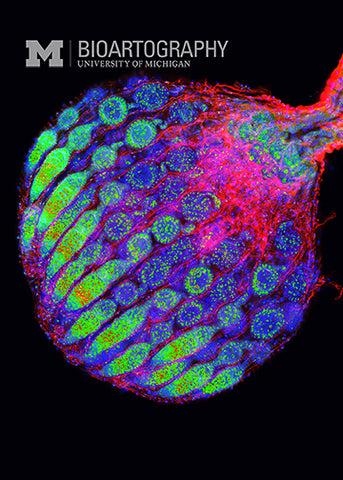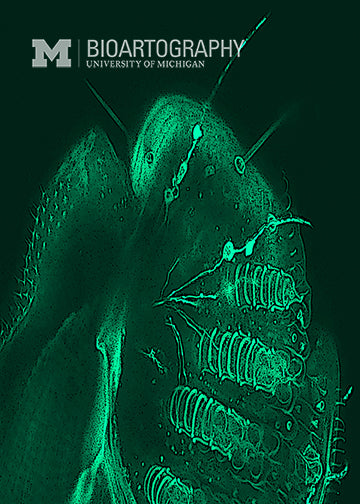
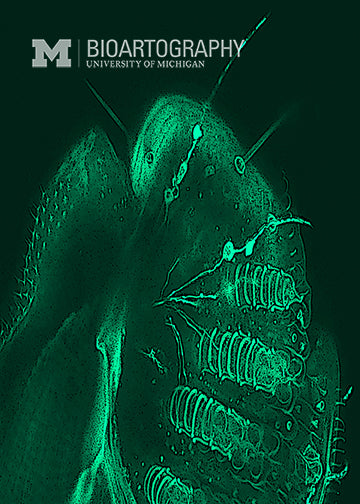
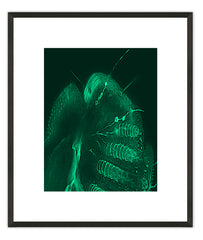
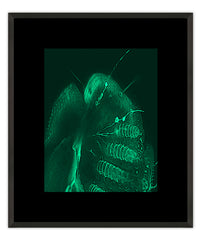
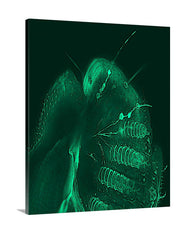
Hayeon Sung, Ph.D., Postdoctoral Fellow (Dus Laboratory), Department of Molecular, Cellular and Developmental Biology, University of Michigan
This is a close-up of the labellum (mouth part) of a fruit fly (Drosophila melanogaster). This is an important taste organ for the fly; its neurons can detect tastes such as sweet and bitter. In the image, the sweet taste neurons and their dendrites (projections) in the sensilla (or taste hairs) are marked in green. These neurons project directly to the brain. Interestingly, when flies are fed a high sugar diet, the response of these sweet neurons to sugar becomes dulled. As a result, the flies tend to eat more and become obese. The same effect has been seen in mice and recent work suggests that in obese humans, sugar also tastes less sweet. In the fly, artificially activating the sweet neurons so that they recover their more intense reactions to sugar can reverse this; the flies do not overeat and do not become obese. Perhaps finding a therapeutic means to prevent this loss of sweet taste sensation could be used to help prevent obesity in humans!
20-011


